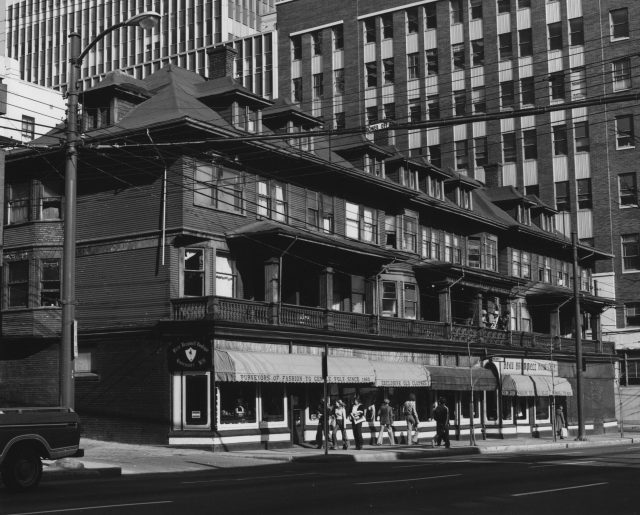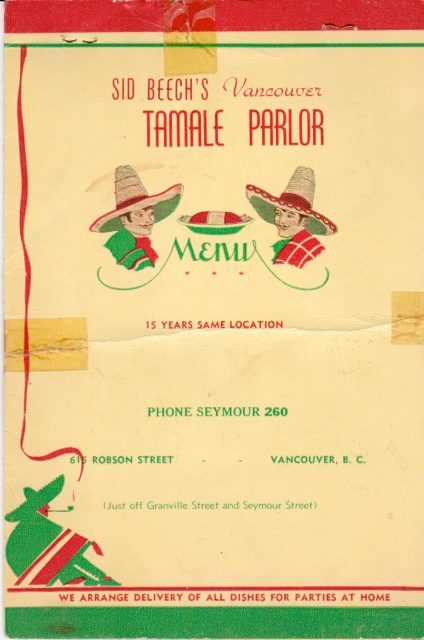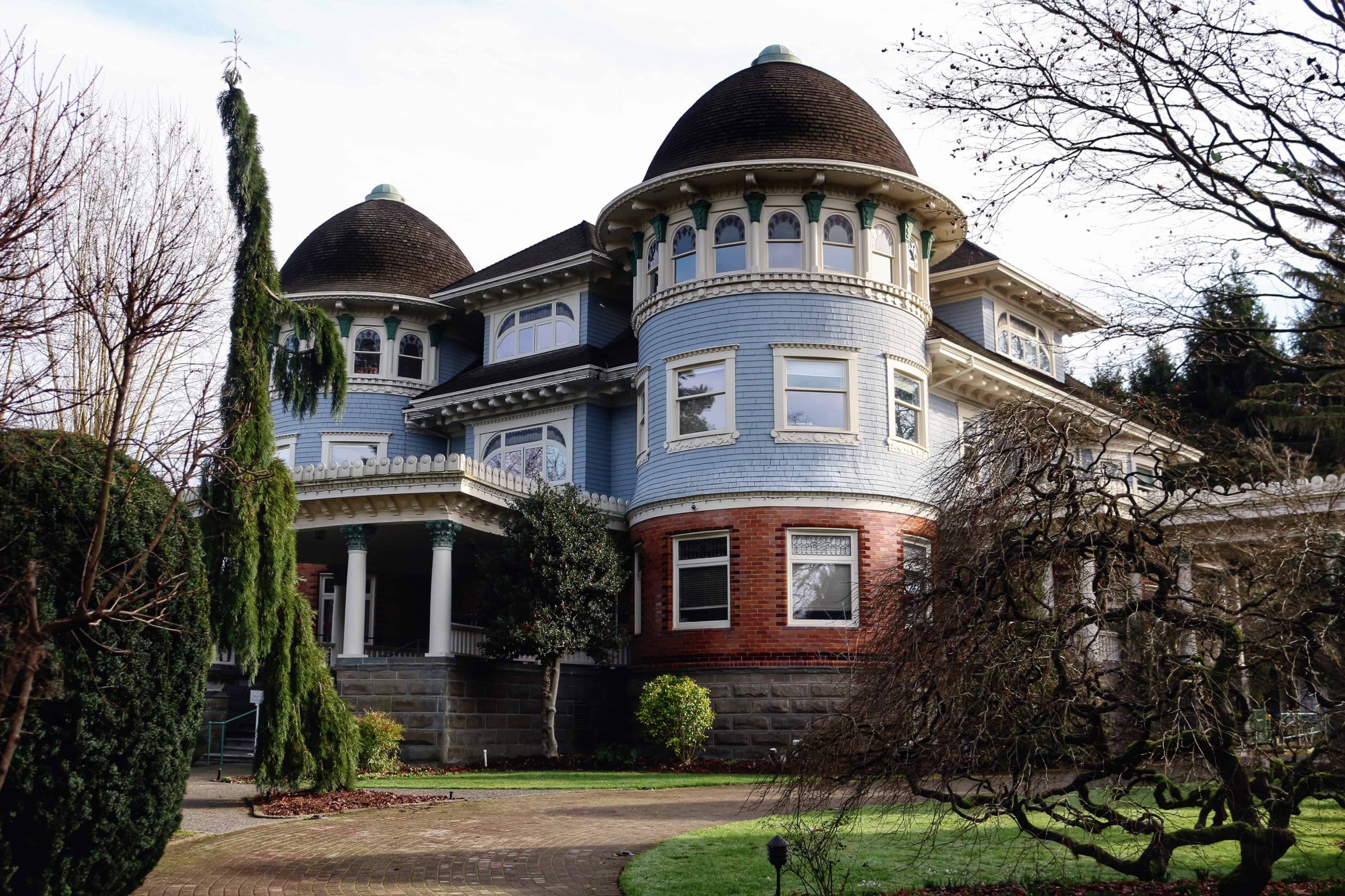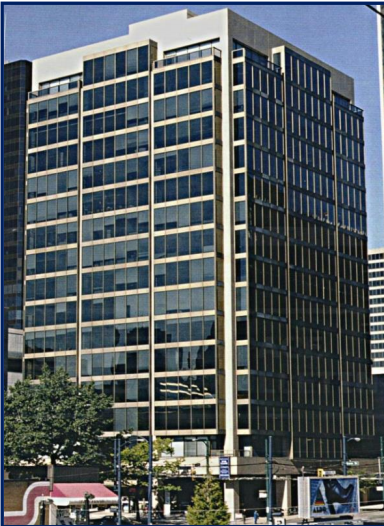
The Orillia on Robson:
The Orillia on Robson and Seymour Streets, was just a memory by the time I moved to Vancouver in the mid-1980s, but from time to time I see a mention or a photo of this early mixed-use structure at Robson and Seymour. One particularly poignant photo was taken before its destruction in the 1980s and shows the Orillia boarded up, covered in music handbills, smeared with graffiti, and the words “Save Me!” scrawled across one of the plywood boardings.
Story from Vancouver Exposed: Searching for the City’s Hidden History

Tamale Parlor:
Author and historian Michael Kluckner tells me he used to play pool there in the 1960s and that it was well known for Sid Beech’s Vancouver Tamale Parlor, which operated there for decades as a popular dining and late-night hangout. Beech’s eclectic menu ranged from tamales and enchiladas to Chinese noodles, spaghetti, soup and sandwiches.

Over the years there were rumours of a brothel that had set up shop in the Orillia. It was Funland Arcade, for a time, and Twiggy’s, a gay disco. Twiggy’s morphed into Faces in the 1970s.

Built for William Tait:
The Orillia was built in 1903 for retired lumber baron and real estate tycoon Owner William Tait who owned several rental properties and his house at 752 Thurlow Street. Originally a two-storey wooden rooming house comprising six row houses, the Orillia first appears with tenants in the 1905 city directory. Residents listed include a nurse, a painter, a cutter, a saddler and a clerk. In 1909, Tait added another floor for retail businesses.

Real estate was good to Tait, and in 1911 he built his Shaughnessy dream home. Glen Brae was dubbed “the Mae West” by locals because of its two outlandish turrets. Tait died in 1919, and Glen Brae changed hands several times, becoming the headquarters for the Kanadian Knights of the Ku Klux Klan in 1925, and eventually the home of Canuck Place Children’s Hospice.

Fate was less kind to the Orillia. After years of neglect the building was demolished in 1985 and replaced four years later by the 16-storey Vancouver Tower.
© All rights reserved. Unless otherwise indicated, all blog content copyright Eve Lazarus.

